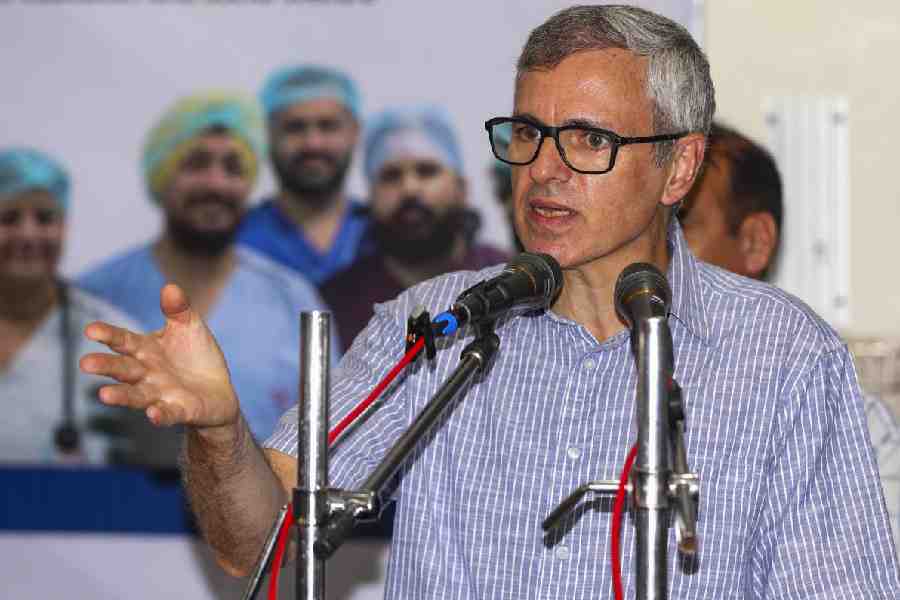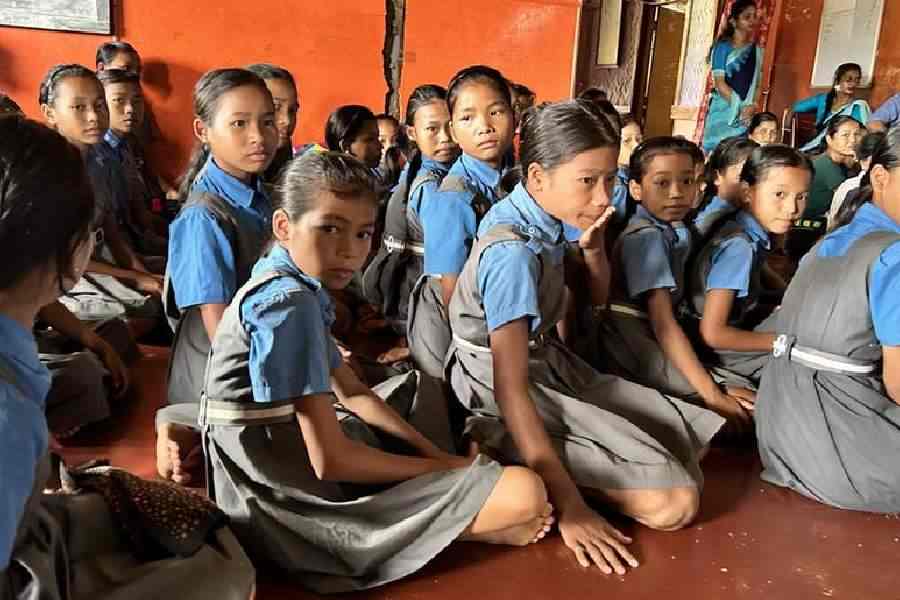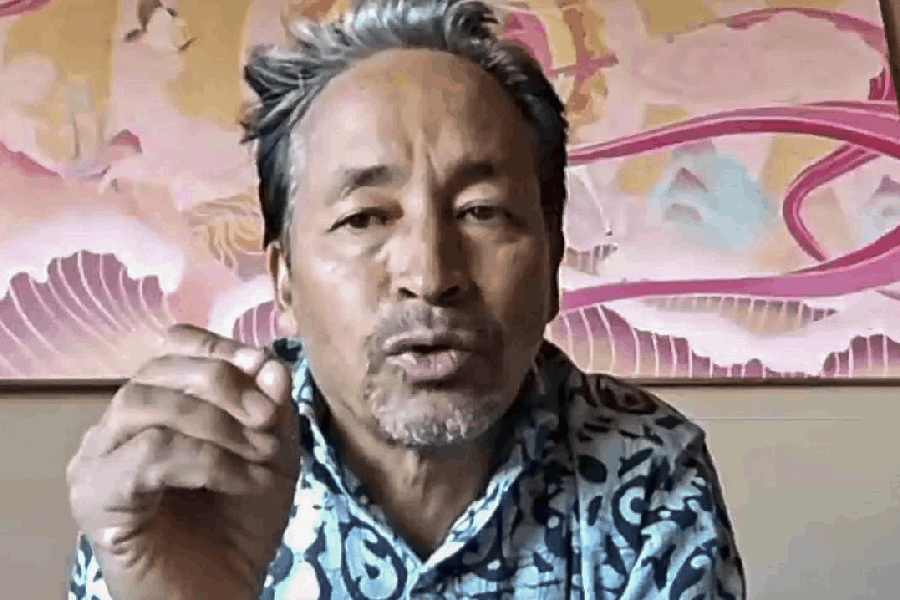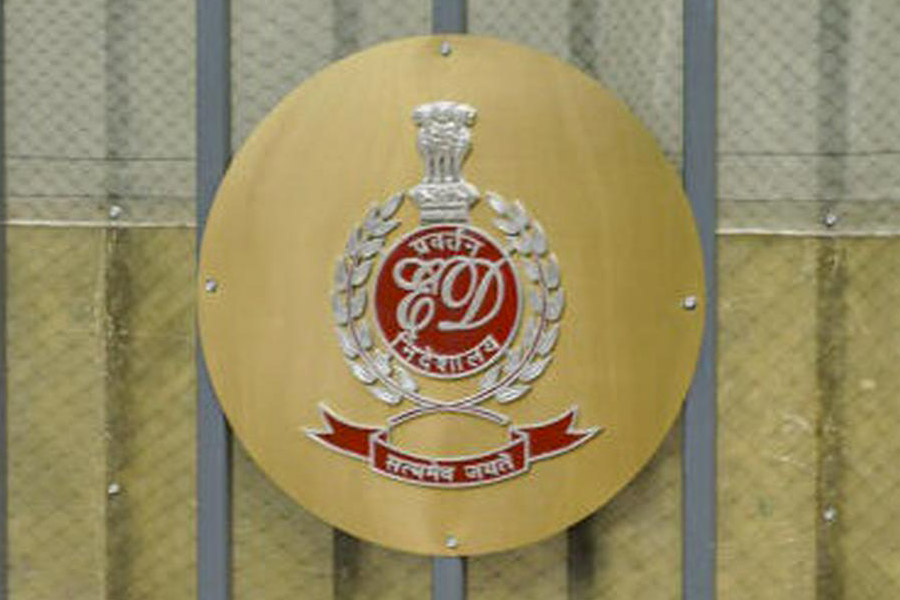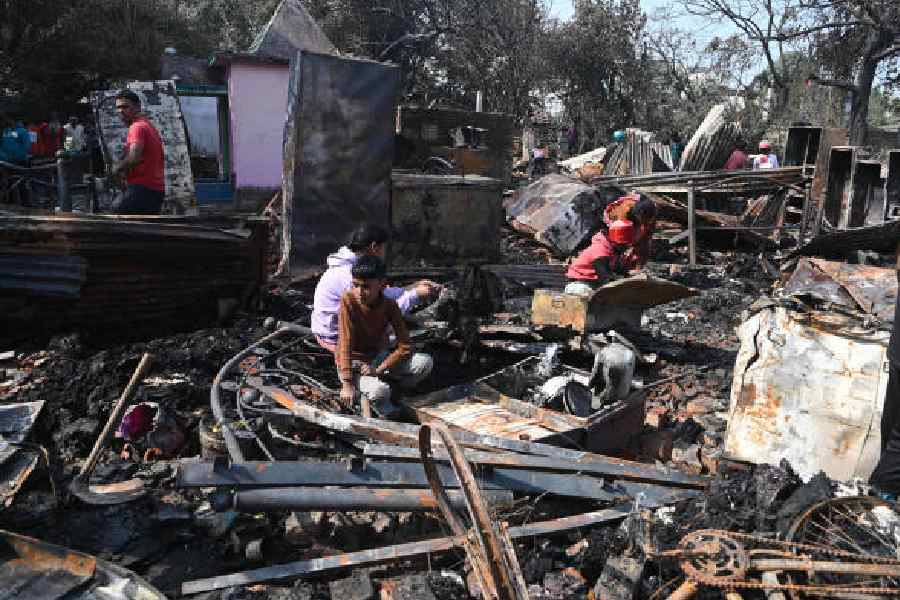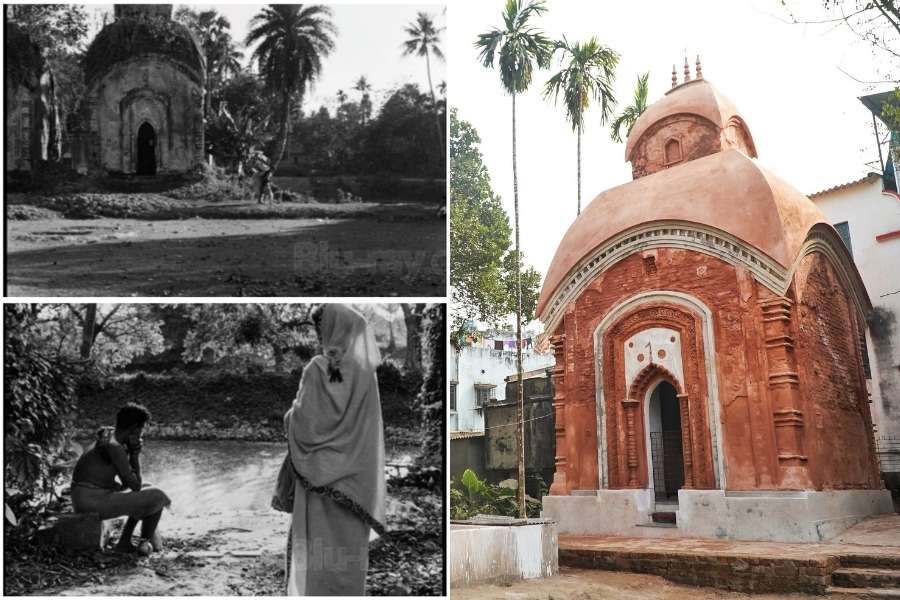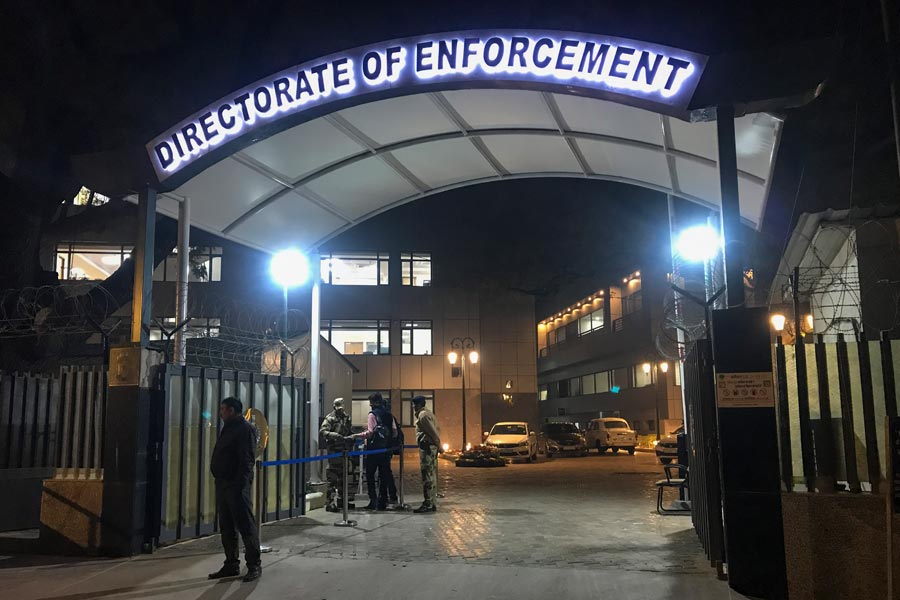 |
 |
 |
 |
| Clay models from the indigo factory on display at Royal Botanic Gardens, Kew, in London. Pictures courtesy: Royal Botanic Gardens, Kew |
Ghurni in Krishnagar is still famous for its life-like clay models of deities, bauls, peasants, artisans, village huts, fruits and fish and other Indian “types” that once used to adorn every Bengali home. The bust of Rabindranath and Venus de Milo (cast in plaster of Paris) made in Krishnagar have for decades become an integral part of our décor. Many of these Krishnagar artisans had generations ago shifted to Kumartuli in north Calcutta and now make various deities throughout the year. Thanks to the polluted rivers, the best quality clay is not available in abundance any longer. So many of these artisans are using fibreglass although the quality of work suffers. No other material is as malleable as clay.
At the high noon of Queen Victoria’s rule the Colonial and India Exhibition was held in 1886 at South Kensington in London, where the clay model of an indigo factory made in Krishnagar by Rakhal Chunder Pal alias Rakhal Das Pal was put on display. The exhibition was “to give to the inhabitants of the British Isles, to foreigners and to one another, practical demonstration of the wealth and industrial development of the outlying portions of the British Empire.” Although the British were impressed by the skill and taste of the Indian craftspeople, they, nonetheless, maintained that because of their superior engineering knowledge and money power, both countries should join forces for mutual advantage.
The model is still on display at the Royal Botanic Gardens, Kew, near London, and according to Mark Nesbitt of Jodrell Laboratory at this magical garden in Surrey, “It is a very popular exhibit, especially with small children.” Nesbitt had written in an email that a similar model reportedly existed in the Indian Museum, Calcutta. But Anuradha Mukherjee, the acting director of that august institution, could not trace it despite her best efforts.
I first came to know about the model from an email attachment circulated by Jenny Paul-Balfour, whose area of specialisation is indigo and who has written several volumes on this precious dye. Last year she had organised a touring exhibition on it where the model was one of the exhibits. Paul-Balfour had some years ago attended a seminar in Calcutta on textiles organised by the British Council. This email contained some amazing details of this model indigo factory.
The model in four sections that fit together to form a rectangle includes 96 human figures, some with facial expressions of their own, four oxen, five buildings, a tread wheel water pump and four pairs of steeping and beating vats. The technical details of the pumps, vats, presses, boilers and thatched huts testify to the power of observation of the craftspeople. This apart, the emaciated dark-skinned workers in loin cloth, women in saris and naked children are depicted in lifelike detail. A lone white man keeps a silent watch over the proceedings. These are not unlike the exquisite models of Egyptian workmen preserved in Cairo museum.
The men performing administrative duties are by striking contrast sleek and well fed and better dressed to boot. Outside the administrative hut is gathered a small crowd. A man recoils as another man holding a slipper aims a blow at him. The workers no doubt could have been better fed, but the horrors of indigo plantations are not visited here.
The inner edge of one section of the model has the label carrying the name of Rakhal Chunder Pal of Krishnagar, presumably a clay modeller. Kew has a similar model of a shellac factory of the same period bearing the label: Made by Krishnagar modellers, N.C. Paul and Bros (gold medallists) who also manufactured garden statues, flower pots, balusters and Hindu idols. Their city office was at 62 Upper Chitpur Road, Kumartuli, Calcutta (off Bonomali Sircar Street).
In all possibility the address of this shop has changed to 468 Rabindra Sarani, which is the name by which Chitpur has been known since the poet’s birth centenary in the 1960s. The shop is now named after Badal Chandra Paul, who is a relative of N.C.’s.
Back in Krishnagar, we discovered that the family of Rakhal Chunder Pal had given up their caste profession long ago. According to Rakhal’s grandson, Bimal Krishna, 78, who retired as a school teacher, Rakhal was born in 1834 and died in 1911. He had visited England at the time of the exhibition. Rakhal was preceded by at least five artisans who also exhibited their works in England. The first one to do so was Ram Pal.
Rakhal was honoured with a citation by the exhibition authority. It was believed to have been presented by Queen Victoria herself. Bimal has framed it and hung it in his room. It shows the queen handing these out to craftspeople, and at its bottom Rakhal Das Pal is named as the recipient. The executive president of the exhibition committee signed the citation but surprisingly, the name of the exhibition is missing. Perhaps the writing on parts of the citation has faded with age.
Bimal Krishna, who lives in a three-storey house, said Rakhal began to make money after the visit to England. But for the freedom struggle, Rakhal’s son Bijoy Krishna would also have exhibited his models in London.
After the exhibition, the model was sent to the Museum of Economic Botany at Kew Gardens and was displayed there, although it was shifted from one venue to another. It has been cleaned and restored from time to time. It is surprising how a wonderful example of Bengal folk art is still preserved in London.


